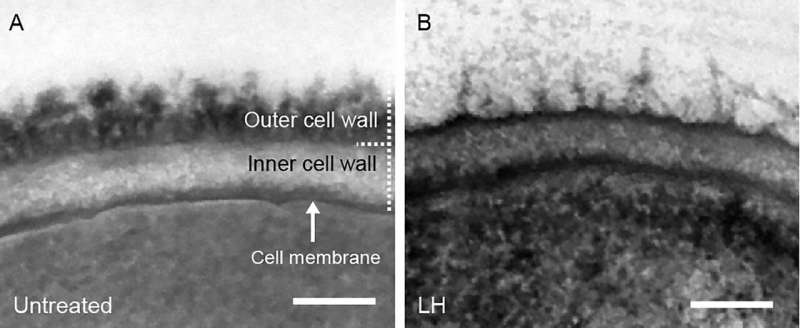This article has been reviewed according to Science X's editorial process and policies. Editors have highlighted the following attributes while ensuring the content's credibility:
fact-checked
peer-reviewed publication
proofread
Stranded student helps design synthetic polymers to combat fungal infections

Every year, more than 2 million people are affected by invasive fungal infections, which are often caused by Candida species and are associated with high mortality rates. The development of new therapies is progressing very slowly. Demand is increasing, however, especially as drug resistance is becoming more and more common.
An interdisciplinary research team led by Dr. Sascha Brunke from the Leibniz Institute for Natural Product Research and Infection Biology–Hans Knöll Institute (Leibniz-HKI) has now investigated the mode of action and therapeutic potential of synthetic polymers.
These long-chain chemical compounds mimic naturally occurring peptides and inhibit the growth of microorganisms. The exact mechanism of action was previously unclear. However, the mystery has now been solved—all thanks to the coronavirus pandemic.
From Australia to Jena
Doctoral researcher and chemistry Ph.D. student Sebastian Schäfer, who was working on the design of antifungal polymers in chemical engineering at the University of New South Wales (UNSW), was in Germany when Australia closed its borders due to the pandemic, preventing Schäfer from returning to UNSW.
But the biotechnologist made a virtue of necessity and temporarily moved his research to the Leibniz-HKI in Jena, where he added a chemical facet to the Department of Microbial Pathogenicity Mechanisms and turned his attention to pathogenic fungi.
This not only led to new research approaches, but also to a very successful collaboration between natural product researchers and infection biologists from Germany and Australia.
The unexpectedly formed team developed several synthetic polymers from the polyacrylamide family that showed strong efficacy against Candida albicans, even against resistant strains. In particular, the polymer called LH, in combination with the drug caspofungin, was extremely effective against the fungus and significantly improved the survival rate of infected moth larvae in laboratory tests.
In the study, now published in Nature Communications, the team also uncovered the exact mode of action of the compounds for the first time.
"The synthetic polymers attack the fungal cells in a number of different ways at the same time. They also use new target structures, which is why they are so effective. This is where they differ from conventional antifungals, which only work in one way," reports Raghav Vij, who is one of the authors of the study alongside Schäfer.
The compounds caused stress in the fungal cell and weakened it by hindering glycosylation on the cell surface. In this chemical process, sugar chains are bound to proteins, which is important for the stability and function of the cells. The polymers also damaged the walls and membranes of the fungal cells, causing them to die. In addition, the polymers supported immune cells in the destruction of fungal cells, as was discovered in interaction tests.
Hope for resistant fungi
"It was also remarkable that LH together with antifungal agents did not lead to the development of resistance in C. albicans in the laboratory. This indicates that such combination therapies are not only more effective, but also more sustainable than previous therapies and can therefore lead to better treatment success," explains Vij.
Another advantage is that "the production of synthetic polymers is relatively inexpensive. In addition, they are stable and storable compared to conventional active compounds. In low-income countries in particular, they could therefore make a significant contribution to public health," summarizes Brunke.
However, more research is still needed before this is achieved. "So far, the polymers have only been tested in insect models. Whether humans also tolerate the new therapy must first be investigated in detail," Brunke points out.
There is also still a need to optimize the structure of the polymers developed. "We don't yet know exactly which molecular components of the polymers affect which parts of the fungus. The target molecule is still missing, so to speak," says Vij.
In addition, whether the polymers have any harmful effects on humans or the environment must be investigated. Despite everything, the research results already point in a positive direction and give hope for effective new therapeutic options.
More information: Sebastian Schaefer et al, A synthetic peptide mimic kills Candida albicans and synergistically prevents infection, Nature Communications (2024). DOI: 10.1038/s41467-024-50491-x
Journal information: Nature Communications
Provided by Leibniz-Institut für Naturstoff-Forschung und Infektionsbiologie - Hans-Knöll-Institut (Leibniz-HKI)




















